A toucan is a brightly colored bird known for its large, vibrant beak that can be almost as long as its body. They’re native to the tropical forests of Central and South America, where their vivid feathers and unique appearance make them easily recognizable. The most famous species, the Keel-billed toucan, has a striking yellow, green, and orange beak, but toucans come in a variety of colors, with some having blue, red, or black beaks and feathers.
Toucans are frugivores, which means they primarily eat fruit. Their diet can include berries, nuts, and seeds, and they’ll sometimes snack on insects or small reptiles if the opportunity arises. They use their massive beaks to pluck fruit from branches, often tossing the fruit into the air before swallowing it whole.
Scientific Classification
-
Kingdom: Animalia
-
Phylum: Chordata
-
Class: Aves
-
Order: Piciformes
-
Family: Ramphastidae
-
Genus: Ramphastos (for most large toucans)
There are about 40 different species of toucans, from the tiny aracari to the giant toco toucan.
Common Names
-
Toucan (general name)
-
In Yoruba: Ayẹ́fẹ̀ funfun (a descriptive name: “white-throated bird”)
-
In Igbo: Nnụnụ elu ugwu (“mountain-top bird”)
-
In Spanish-speaking areas: Tucán
-
In Portuguese (Brazil): Tucano
Geographic Distribution
Toucans are native to the tropical forests of Central and South America, including:
-
Brazil
-
Colombia
-
Peru
-
Ecuador
-
Costa Rica
-
Venezuela
-
Parts of northern Argentina and Bolivia
They are rarely seen outside of rainforests, their home is the canopy, high up in the trees.
Physical Characteristics
Toucans are famous for their enormous, colorful beaks, which can be as long as half their body.
-
Beak: Light but long, often bright orange, yellow, blue, or green
-
Size: Smallest (Green Aracari) – 30 cm; Largest (Toco Toucan) – 65 cm
-
Feathers: Usually black with bold patches of white, yellow, red, or blue
-
Feet: Zygodactyl (2 toes forward, 2 back), great for gripping branches
-
Eyes: Bright and expressive
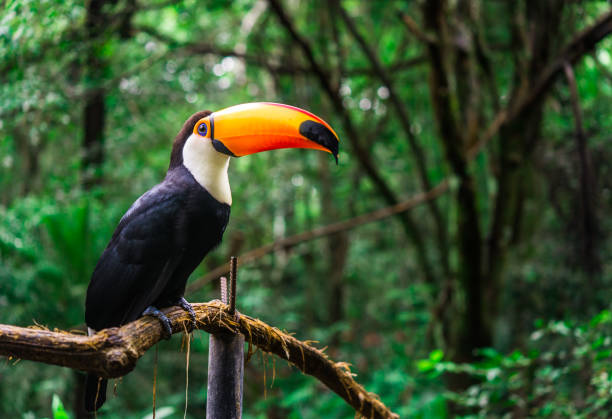 Image showing a Toco Toucan perched on a branch with a jungle backdrop (Source: iStock)
Image showing a Toco Toucan perched on a branch with a jungle backdrop (Source: iStock)
Major species of Toucans
1. Toco Toucan (Ramphastos toco)
-
Size: Largest of all toucans
-
Beak: Bright orange with a black tip
-
Region: Brazil, Bolivia, Argentina, Paraguay
-
Diet: Fruits, insects, and small reptiles
-
Behavior: Loud and social, often seen in pairs or small groups
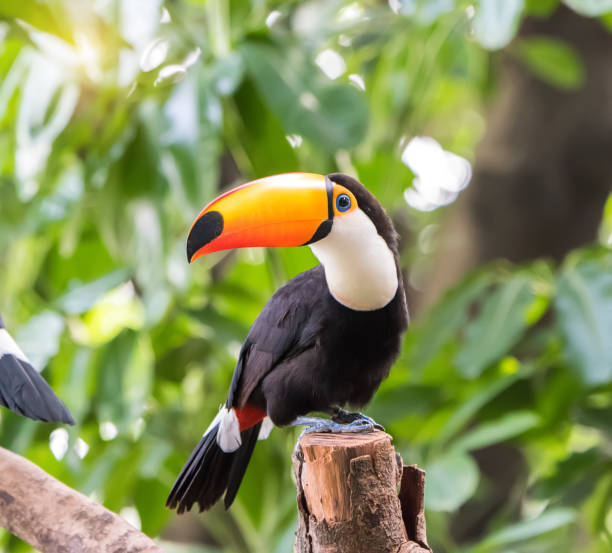 Image showing a Toco Toucan perched on a tree branch with beak glowing in sunlight (Source: iStock)
Image showing a Toco Toucan perched on a tree branch with beak glowing in sunlight (Source: iStock)
2. Keel-Billed Toucan (Ramphastos sulfuratus)
-
Nickname: Rainbow-billed toucan
-
Region: Central America (Belize, Guatemala, Honduras)
-
Beak: Multicolored — green, red, blue, orange
-
Sound: Croaking call, like a frog
-
Status: Near-threatened in some areas due to habitat loss
 Image showing a kneel-billed toucan (Source:iStock)
Image showing a kneel-billed toucan (Source:iStock)
3. Channel-Billed To ucan (Ramphastos vitellinus)
-
Region: Amazon and Guiana Shield
-
Beak: Black with an orange stripe or patch
-
Throat: Yellow or white, depending on subspecies
-
Personality: Curious and vocal
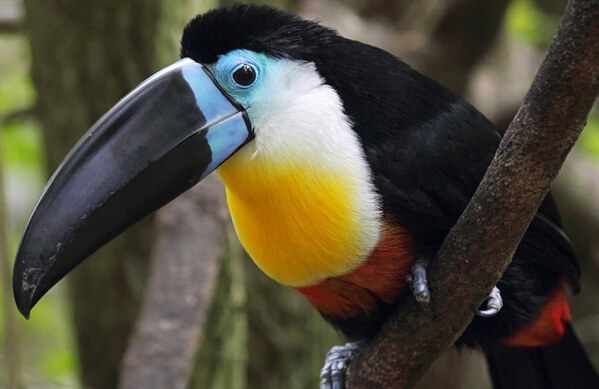 Image showing a channel-billed toucan (Source: American Bird Conservancy)
Image showing a channel-billed toucan (Source: American Bird Conservancy)
4. Green Aracari (Pteroglossus viridis)
-
Size: One of the smallest toucans
-
Color: Mostly green with red belly
-
Habitat: Northeastern South America
-
Diet: Mainly fruits
-
Beak: Short and curved, with black and orange markings
Often kept in aviaries due to their small size and calm nature.
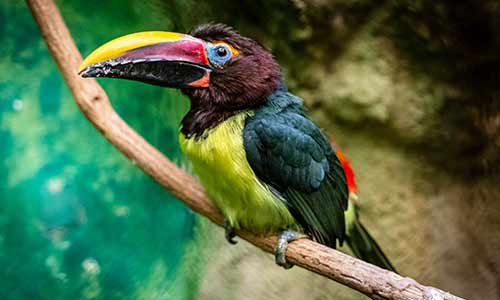 Image showing a green aracari (Source: Franklin Park Zoo)
Image showing a green aracari (Source: Franklin Park Zoo)
Fun facts about Toucans
-
Toucans can’t fly very far, they prefer hopping and gliding from branch to branch.
-
Their beaks are made of keratin and are very light, despite their size.
-
They use their beaks to pluck fruit, defend territory, and communicate.
-
Toucans nest in tree holes, often reused from woodpeckers.
-
They regulate body heat by adjusting blood flow to their beak!
Importance to nature & humans
-
Toucans help disperse seeds by eating fruit and spreading it across the forest.
-
They control populations of insects and lizards.
-
In Indigenous cultures, toucans are symbols of harmony, talkativeness, and joy.
-
They attract eco-tourism and appear in many logos, cartoons, and ads.
Health & common issues
In captivity or conservation centers, toucans need special care:
-
Beak injuries from falls or poor handling
-
Calcium deficiency from poor diets
-
Liver problems from too much iron (Iron Storage Disease)
-
Stress from noisy or small environments
Toucans thrive best in large aviaries with perches, natural food, and quiet surroundings. Always consult an avian vet like if a toucan shows signs of illness or feel free to reach out to us at Doctor Hulk Veterinary Hospital through 08143397614.
Conservation Status
-
Many toucan species are threatened by habitat loss, especially in the Amazon.
-
Deforestation, illegal bird trade, and climate change are major risks.
-
Some toucan populations are stable, but others, like the Yellow-Browed Toucanet, are endangered.
Conservation programs focus on protecting rainforests, banning illegal trade, and supporting eco-education.
Toucan vs Hornbill
| Feature | Toucan | Hornbill |
|---|---|---|
| Location | Central & South America | Africa & Asia |
| Beak | Bright, smooth, colorful | Curved with casque (helmet-like top) |
| Nesting Behavior | Tree holes (no sealing) | Females sealed into tree holes |
| Diet | Mostly fruits | Fruits, insects, small animals |
| Flying Ability | Glides short distances | Strong fliers |








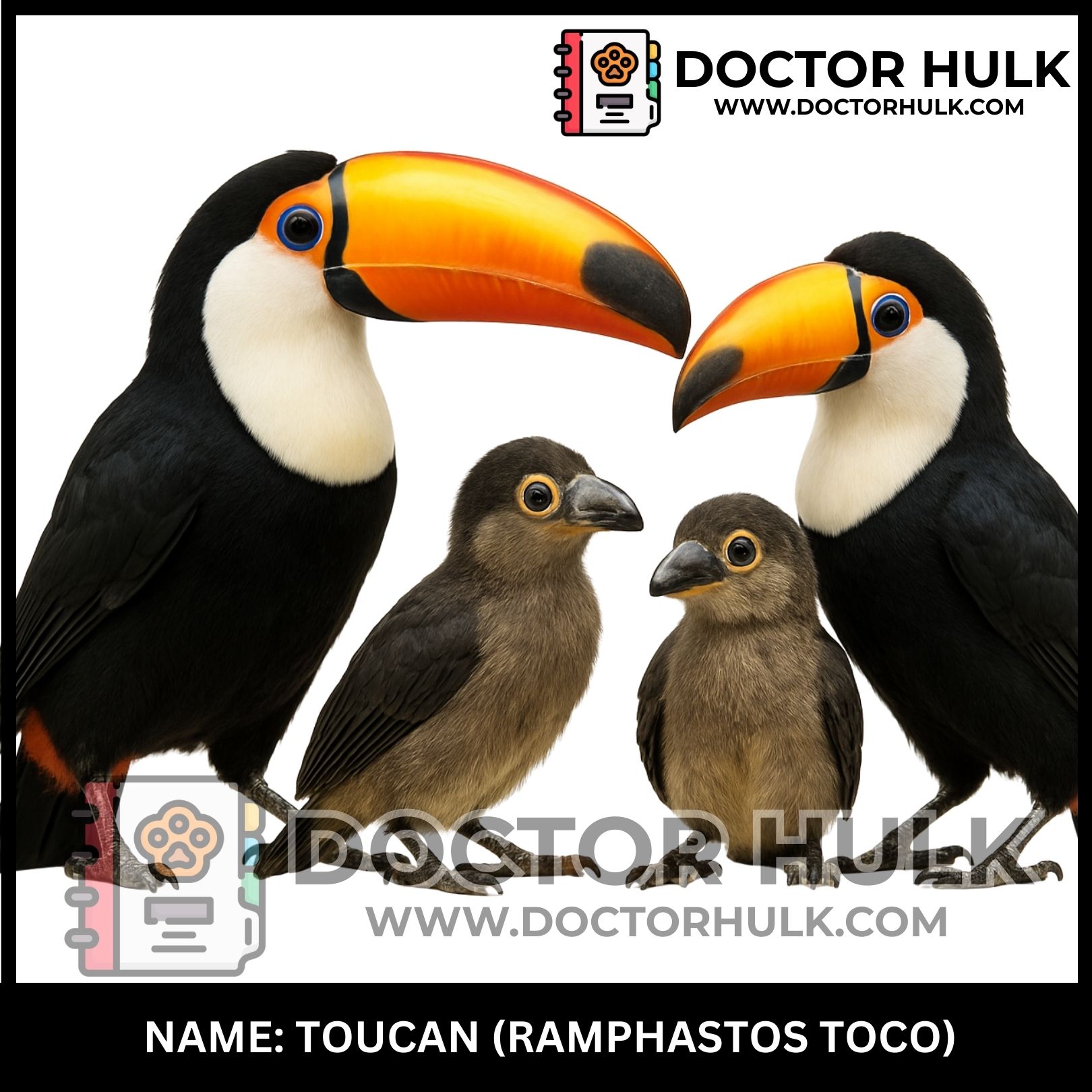

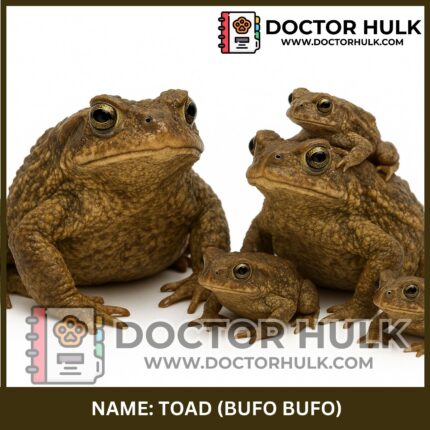



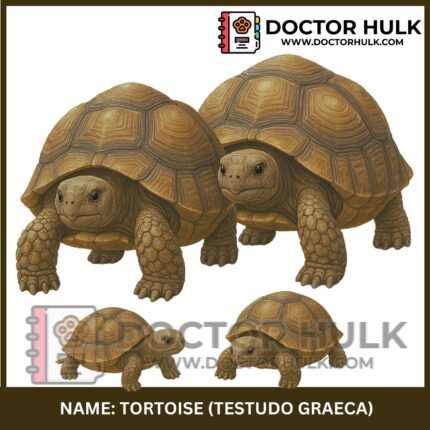
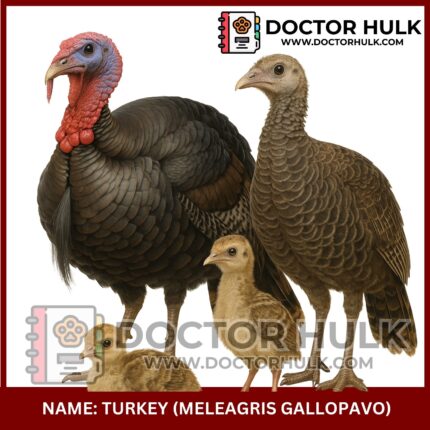

Reviews
There are no reviews yet.